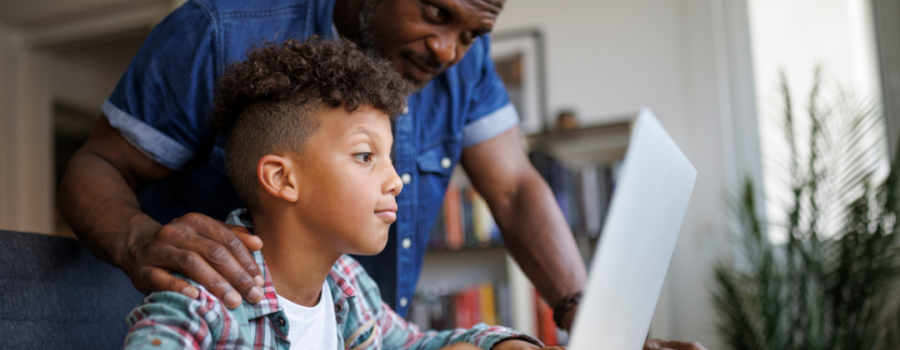Starting July 2026, Minnesota will become the first state to require mental health warnings on social media apps. Before users can scroll through posts, they’ll see a pop-up message acknowledging that prolonged use may negatively impact mental health. This groundbreaking law is an excellent opportunity for families to reflect on how social media affects our lives—especially for children.
Social media isn’t inherently harmful, but it can amplify stress, anxiety, and comparing ourselves to others, particularly for youth whose brains are still developing. Since the pandemic, many teens have leaned on social platforms for connection. While that’s understandable, it’s more important than ever to help them balance online interaction with real-life relationships.
Teaching Teens to Create a Healthier Relationship with Social Media
1. Recognize the Impact
As children are being introduced to social media at young ages, it’s best to start these conversations early. Spend time with your child and ask them, in a supportive, non-judgmental way, to show you what they like to do online. Show an interest in what they like to do. Discuss emotional triggers and how they can identify if the content they’re watching is causing strong feelings (jealousy, sadness, anger). Guide them on safety measures to protect their mental health, but also ensure they understand other hazards like talking to strangers online or giving out personal information.
They are in control of what they post and should consider thoughts and feelings when posting photos or information that includes other people. Model respect by asking them first if they are okay with you posting a photo of them online. It’s okay for them to set boundaries with what’s posted online of them, and hopefully, they’ll pass along the same courtesy to others.
2. Consider a Social Media Cleanse
Try a family challenge: go phone-free for a weekend and do something fun outdoors and explore offline hobbies. Reading, drawing, walking, or journaling can be great alternatives. Normalize social media breaks and remind them it’s okay to step away—there’s no shame in protecting their mental health. A metaphor for social media is that it can be like a funhouse mirror—distorted and not always fun. You are looking at people’s highlight reels and not what their actual everyday life is.
3. Help Them Take Control of Their Feed
Empower them: they control what they see and who they follow. Since social media is almost unavoidable, especially for teens, it empowers them to take control of their algorithm. If they see something triggering, negative, mean, they can block and unfollow accounts. Encourage them to follow creators whose content focuses on education, inspiration, and uplifting others.
4. Manage Time Spent Online
Track screen time together: make it a shared activity, not a punishment. Start by modeling healthy screen habits yourself. Talk with them about setting time limits to avoid mindless scrolling, encourage them to set timers or alarms so they are reminded when to step away.
- Set app limits:
- iPhone: Settings → Screen Time → App Limits
- Android: Settings → Digital Wellbeing → App Timers
- Be intentional: Log on with a purpose, log off when done.
Minnesota’s new law is a step toward acknowledging the real impact social media has on mental health. As parents and caregivers, we could guide teens in building a healthier, more intentional relationship with these platforms. It starts with open conversations, shared boundaries, and modeling the behavior you hope to see.
Download our Helping Teens Build a Healthier Relationship with Social Media PDF.
Nexus Family Healing is a national nonprofit mental health organization that restores hope for thousands of children, families, and adults each year through services in community mental health, crisis and stabilization, foster care and adoption, and residential treatment. For over 50 years, we’ve used innovative, personalized approaches to heal trauma, break cycles of harm, and reshape futures. We believe every child is worth it — and every family matters. Access more resources at nexusfamilyhealing.org/resources.
